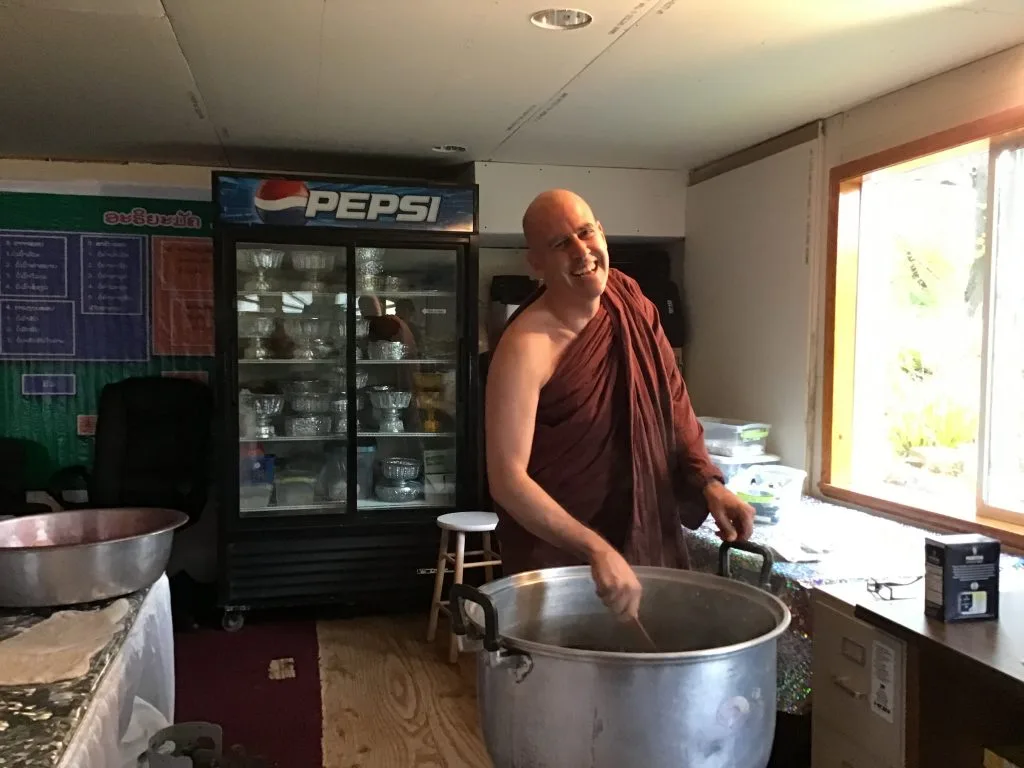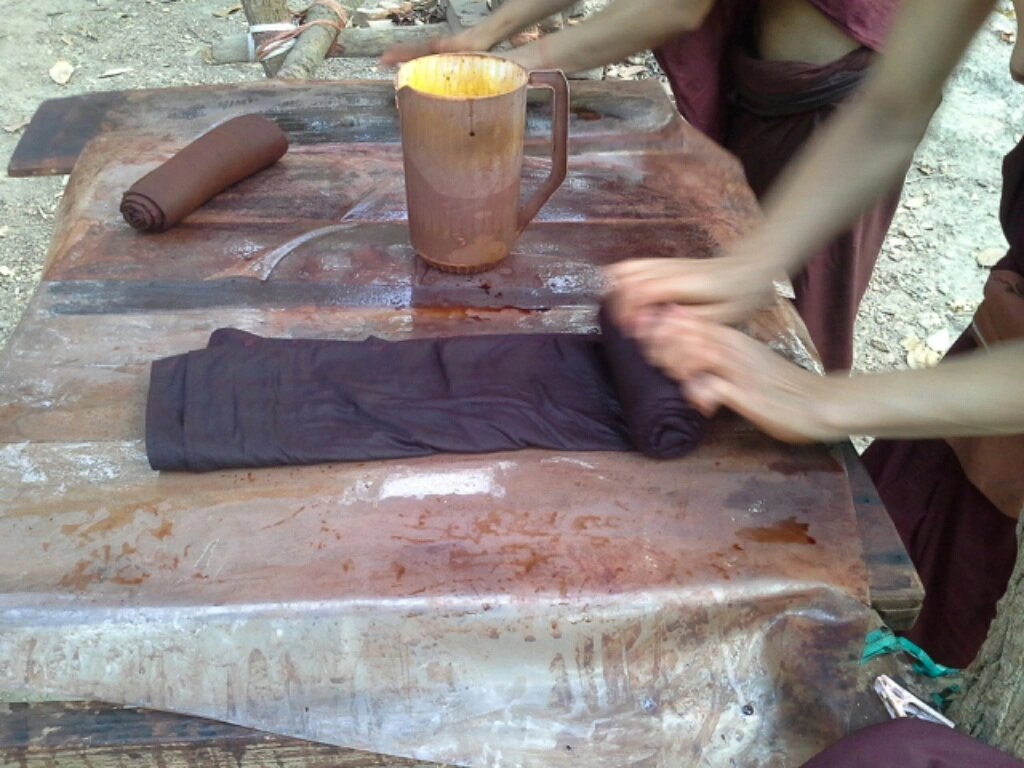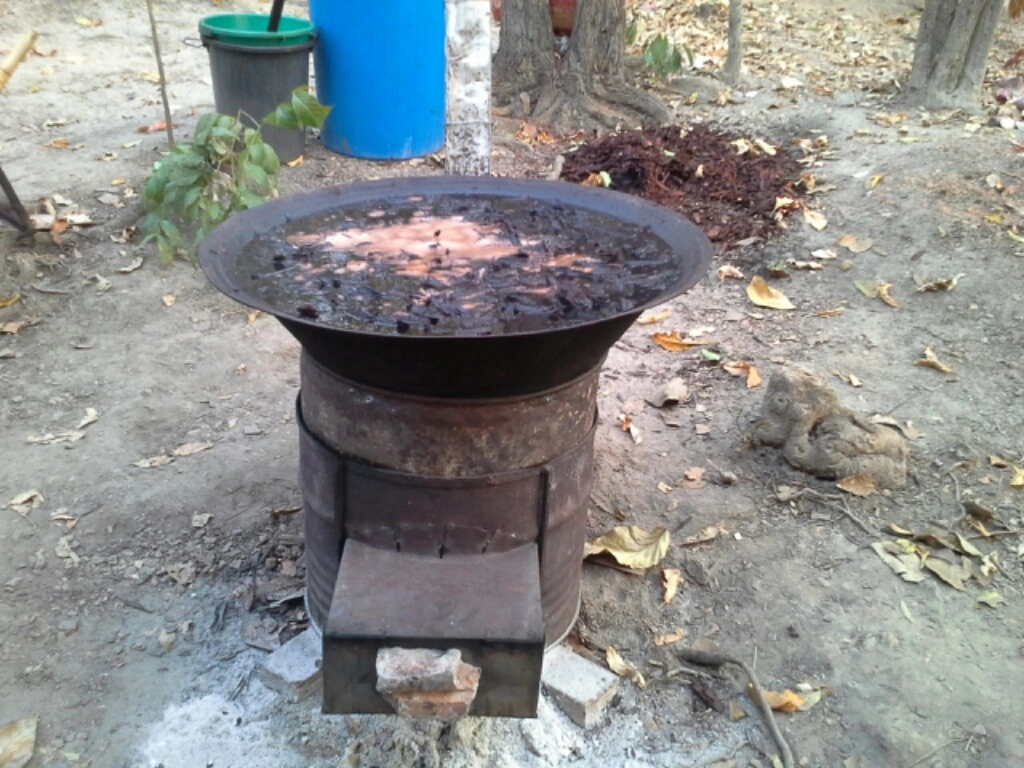Monk Life and Natural Dyeing

A venerable tending the fire for cooking dye
Here are pictures about the natural dyeing process. The monks boil the ironwood tree bark chips for a long time (days). When a drop of dye is dropped in a glass of water, a ball will form and sink to the bottom. At that point, the dye master will empty that batch of dye into containers and then reboil the same chips with fresh water to make more dye. You can do this two or three times before the chips are used up.
Cold-rolling the dye into the robes
The dye is added by sprinkling just a little bit onto the robe and then rolling it on again and again. After the whole robe has the dye embedded into the robe, it is hung outside to dry. After this is done, one should not use regular laundry detergent to wash the robe. Instead, one should use boiled water to wash the robes. Otherwise, the dye will wash out with modern cleaning agents.
This process is different from regular dying and I suspect that the art of natural dying is not done correctly. I have researched this and there is an American yogi I know who has a masters in Chemistry and he also used to own a chemical manufacturing company in Vietnam. I have asked him to research this process and he has pledged to help us rediscover this ancient art upon his return. In the meantime, this is the only method we have and it is better to store the freshly dyed robe in a plastic bag overnight or longer for better results.
The cooking process takes days
Chemical dyes are done much differently by making a dye bath and then boiling the robe in a large pot for about 25 minutes. The dye sticks much better this way.

Chemical Dye on a stove top
The ancient rules (vinaya) do not mention chemical dyes but they do mention that one is not to use mud to color a robe. Because of this, Pa-Auk does not allow chemical dying performed by monks even though the robe cloth is factory-dyed by chemicals beforehand. Nauyana, Sri Lanka, allows chemical dying by monks, but recommends a natural dye on top.
In Buddhism, we have “The Great Standards”. If something is not mentioned in the rules that should be (because it is a modern version of the same thing), then it is allowable. In this way, chemical dyes are allowed but some do not feel comfortable doing so. I’m sort of in the middle because I have two traditions under my chemically dyed belt.
Click below to search subjects




